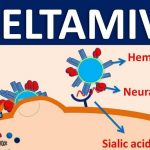
Contents
Stretch Marks
Stretch marks, also known as striae distensae, are linear streaks on the skin caused by overstretching. They run perpendicular to the skin’s maximum lines of tension.
Stretch marks start as flat red lines and gradually become slightly depressed white streaks. They commonly occur near the armpits, thighs, abdomen, chest, buttocks, and groin. They are more prevalent in obese individuals and during pregnancy. The appearance of stretch marks resembles the changes seen on over-inflated rubber balloons. They are usually not painful.
Stretch marks may also occur as a side effect of certain medications and certain medical conditions.
Types of Stretch Marks
Stretch marks can be categorized into two types based on their formation and appearance:
- Striae rubrae: These are stretch marks in their early stages, characterized by linear, vein-like, slightly raised crimson lesions. Over time, they become pale striae.
- Striae albae: These are white, wrinkled, depressed stretch marks that are permanent. There are four subtypes:
- Striae atrophicans: Associated with thin skin and can develop from frequent use of corticosteroids or in combination with other medical conditions, such as Cushing’s syndrome.
- Striae nigra: Dark gray or black stretch marks typically found in people with darker skin tones.
- Striae caerulea: Dark blue-purple stretch marks typically found in people with darker complexions.
- Striae gravidarum: Stretch marks that develop during pregnancy.
Causes of Stretch Marks
The exact mechanism of stretch mark formation is still debated. It appears that there is damage to the elastic fibers in the dermis (the deeper layer of the skin), accompanied by inflammation, which leads to atrophic scar-like changes.
- Excessive physical stretching of the skin is believed to induce these changes.
- Several clinical situations can predispose the skin to stretch mark formation, such as:
- Rapid and excessive weight gain
- Excessive use of topical or systemic glucocorticoid drugs (steroids)
- Cushing’s disease
- Puberty
- Marfan syndrome and Ehlers-Danlos syndrome
- Excessively large breasts or breast implants
- Pregnancy
Risk Factors for Stretch Marks
The two most common risk factors for stretch marks are rapid weight gain and pregnancy. Other risk factors include conditions that make the skin more prone to developing stretch marks.
Symptoms of Stretch Marks
Stretch marks are usually painless and not itchy. They start as red streaks and eventually become white lines.
The appearance of stretch marks varies depending on when they form, the cause, location, and the individual’s skin type and color. They may manifest in the following ways:
- Slightly depressed parallel lines or long, thin, rippled streaks on the skin
- Pink, red, black, blue, silver, or purple hue
- Initial dark streaks that may fade over time
- Whitish and scar-like appearance over time
- Several centimeters long and one to 10 mm wide
- Different texture compared to normal skin, potentially wrinkled
- Covering large parts of the body, such as the tummy, torso, breast, hips, buttocks, or thighs
- Slightly raised and possibly itchy during the early stages
Diagnosis of Stretch Marks
Stretch marks are easily recognized visually by both patients and doctors due to their common occurrence.
Permanent Removal of Stretch Marks
Stretch marks are generally considered a cosmetic issue. While they may fade with time, they are permanent scars. However, some treatments can help make them less noticeable and relieve itchiness. It’s important to note that not all treatments work for everyone.
Over-the-counter moisturizers, especially those containing hyaluronic acid, may reduce the visibility of stretch marks if applied during the early stages.
Topical retinoid therapy, such as tretinoin or retinol, may be effective if used consistently every night for 24 weeks during the early stages. It’s important to follow the prescribed usage as it can have side effects. Avoid using retinoids during pregnancy as they can be harmful.
Various procedures performed by a dermatologist or plastic surgeon can also help reduce the appearance of stretch marks:
- Pulsed dye laser therapy to relax blood vessels under the skin
- Fractional CO2 laser therapy for smoothing out old white marks
- Excimer laser therapy to target and correct pigmentation
- Microdermabrasion to exfoliate the skin’s upper layer and fade new stretch marks
- Chemical peels to stimulate new skin growth, although this may not permanently eliminate stretch marks
- Radiofrequency therapy to trigger collagen production and improve stretch mark appearance
- Ultrasound treatment to tighten the skin and stimulate collagen production
- Cosmetic surgery, such as a tummy tuck, to remove the skin with stretch marks
Home Remedies for Stretch Marks
Some popular home remedies for stretch marks include almond oil, cocoa butter, olive oil, or vitamin E. While some anecdotal reports and studies suggest their effectiveness, others have found them ineffective. If any of these oils work for you, you can continue using them.
Tanning or using self-tanners cannot eliminate stretch marks but may help camouflage them.
Do Stretch Marks Disappear?
As stretch marks mature, they become less noticeable but rarely disappear completely. They do not pose any health risks.
After pregnancy, stretch marks can take between 6 and 12 months to fade. They are permanent marks that may become less noticeable with treatments.
Prevention of Stretch Marks
Apart from maintaining a healthy weight and avoiding the long-term use of potent topical steroids or oral steroids, little can be done to prevent stretch marks.
Sources:
Stretch Marks: Why They Appear and How to Get Rid of Them
Medscape Medical Reference
Medscape Medical Reference


